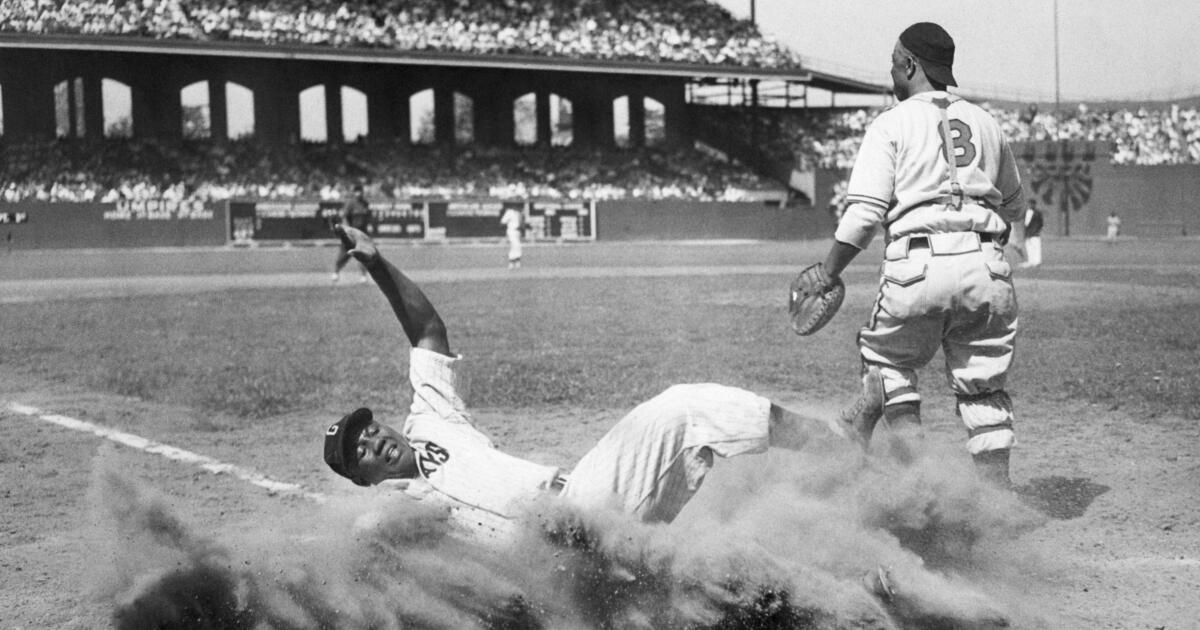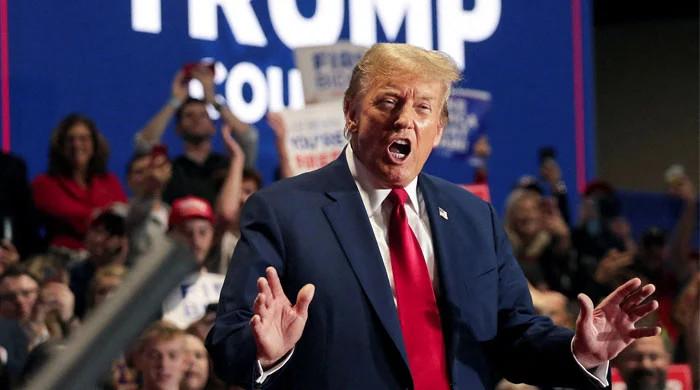The numbers are not complete. Too many riots and too many pickup ball games for every home run and earned run to have been documented by a box score.
But that will no longer delay the inclusion of Negro Leagues statistics in the official records of Major League Baseball. Statistics were added Wednesday for more than 2,300 players whose careers included games in seven different Negro Leagues from 1920 to 1948, the year after Jackie Robinson broke the color barrier by debuting with the Dodgers.
You could say that the numbers were finally integrated.
“This initiative is focused on ensuring that future generations of fans have access to the statistics and milestones of all those who made the Negro Leagues possible,” said MLB Commissioner Rob Manfred. “His accomplishments on the field will be a gateway to greater knowledge about this triumph in American history and the path that led to Jackie Robinson's debut with the Dodgers in 1947.”
Visit the stats page on mlb.com to see a new leader in batting average (.372) and slugging percentage (.718): Josh Gibson. Ty Cobb's .367 average now ranks second, as does Babe Ruth's .690 slugging percentage.
Ted Williams and Ruth surpassed Gibson in career on-base percentage, but the legendary slugger who played for the Pittsburgh Crawfords and Homestead Grays in a 14-year career that ended in 1946 is the all-time leader in on-base percentage. plus. slugging percentage (OPS) of 1.177.
Gibson also now has the highest single-season batting average. He hit .466 for the Grays in 1943, eclipsing Hugh Duffy's .440 mark from 1894.
“Now that Josh Gibson is at the top in OPS and batting average and a few other categories, it's great news,” Pittsburgh Pirates outfielder Andrew McCutchen said. “But it's more than just that and the numbers. It's great that you can now learn about Negro Leagues players. … I'll be able to delve deeper into some names you may not have heard of.”
The leaders of those and other rate statistics, expressed as decimals, are now peppered with Negro League standouts. Satchel Paige, for example, now has the third-lowest single-season ERA (1.01 with the 1944 Kansas City Monarchs). Outfielder Oscar Charleston is in the top 10 in batting average, on-base percentage, slugging percentage and OPS.
Records of counting statistics such as home runs and runs batted in for batters and strikeouts and wins for pitchers are not as affected because Negro League seasons generally consisted of 60 to 80 official games. Gibson, for example, is credited by the MLB with having played only 653 games and hitting 174 home runs.
However, his plaque at the National Baseball Hall of Fame and Museum in Cooperstown, New York, places his home run total at “nearly 800,” which, if accurate, indicates that Gibson likely played in more than 2,000 games. . Many were out of the league and others were simply not documented in the scores.
Although MLB teams were prohibited from playing games outside of their league schedules beginning in the 1920s, the Negro League teams' irregular and sweeping league schedules “were not of their making, but were born out of MLB's exclusionary practices,” said John Thorn, MLB's official historian. . “To deny these clubs and players major league status now would be to impose a double penalty.”
Thorn chaired the 17-person Negro League Statistics Review Committee that determined which games counted and which did not. The committee included several well-known statistical experts, none more respected than Larry Lester, who for decades headed the Negro League Research Committee for the Society for American Baseball Research (SABR).
Lester co-edited the “Negro League Book” in 1994 and has spent the last three decades unearthing enormous amounts of data, most recently for the Seamheads Negro Leagues database.
“Stories, folklore and embellished truths have long been a staple of the Negro Leagues narrative,” Lester said. “Those stories will always be entertaining, but now our dialogue can be quantified and qualified to support the true greatest of these athletes. Every fan should welcome this statistical restitution towards social reparation.”
MLB's decision to consider the Negro Leagues equivalent to the major leagues came during the 2020 season, which was shortened to 60 regular-season games due to the pandemic. From a statistical standpoint, the condensed season provided a guide to how Negro League players would qualify for single-season and career records.
The MLB threshold has long been 3.1 plate appearances per scheduled game to qualify for batting titles and one inning pitched per scheduled game for the earned run average title. Those classification standards were used with Negro Leagues players.
Also affected are the career numbers of players who began their careers in the Negro Leagues before moving to the MLB after Robinson's pioneering integration in 1947. Roy Campanella, who won three National League MVP awards in the decade In 1950 with the Brooklyn Dodgers, he debuted in the Negro National League. He leagued at age 15 and spent eight seasons primarily with the Baltimore Elite Giants before the Dodgers signed him in 1946.
Now Campanella's career statistics include his .385 batting average in 1944 and 48 RBIs in 58 games in 1945, both of which led the Negro National League. His career batting average rose from .276 to .282 and his 167 RBIs lifted him over 1,000, to 1,023.
Robinson's career hit total increases to 1,567 thanks to his 49 hits for the Kansas City Monarchs in 1945 and his batting average improves from .311 to 313. And the win total of Dodger pitching great Don Newcombe , increased from 149 to 153 due to his two years. He was with the Newark Eagles before signing with Brooklyn in 1946 at age 19.
“It's really exciting,” said Cincinnati Reds pitcher Hunter Greene, a product of Sherman Oaks Notre Dame High School. “I'll have to do a little more research and understand some of the history to rewire my brain with some of the best players.”
Negro League statistics accumulated and published by MLB today differ slightly from those of Baseball-Reference.com, the widely recognized primary source of statistical information. Baseball Reference conducted its own data collection, relying heavily on the work of the Seamheads Negro League database.
The work is not done. MLB estimates the statistics are only 75% complete and those who have made careers of mining box scores and other credible sources of information won't stop now. Gibson's place in baseball history was cemented Wednesday, but it can still change.
Seven Negro Leagues whose statistics the MLB determined were Major Leagues
• Negro National League (I) (1920–1931)
• Eastern Colored League (1923–1928)
• Negro American League (1929)
• East-West League (1932)
• Southern Negro League (1932)
• Negro National League (II) (1933–1948)
• Negro American League (1937–1948).
Negro Leagues Statistics Review Committee (in alphabetical order)
• Gary Ashwill, Seamheads Negro Leagues Database
• Phil Dixon, baseball and Negro Leagues author Baseball Alive
• Jeff Fannell, Major League Baseball Players Association.
• Sean Gibson, The Josh Gibson Foundation
• Leslie Heaphy, Kent State University and Negro Leagues author
• Kevin Johnson, Seamheads Negro Leagues Database
• Bob Kendrick, Negro Leagues Baseball Museum
• John Labombarda, Elias Sports Bureau, official statistician of Major League Baseball
• Larry Lester, baseball author/researcher and Negro Leagues expert
• Sonya Pankey, founder of C. Belle LLC
• Rob Parker, MLBBro.com
• Tony Reagins, Major League Baseball
• CC Sabathia, Major League Baseball
• Tom Shieber, National Baseball Hall of Fame and Museum
• Claire Smith, long-time baseball journalist.
• Tom Thress, Retrosheet.org
• President: John Thorn, official historian of Major League Baseball
The Associated Press contributed to this report.












